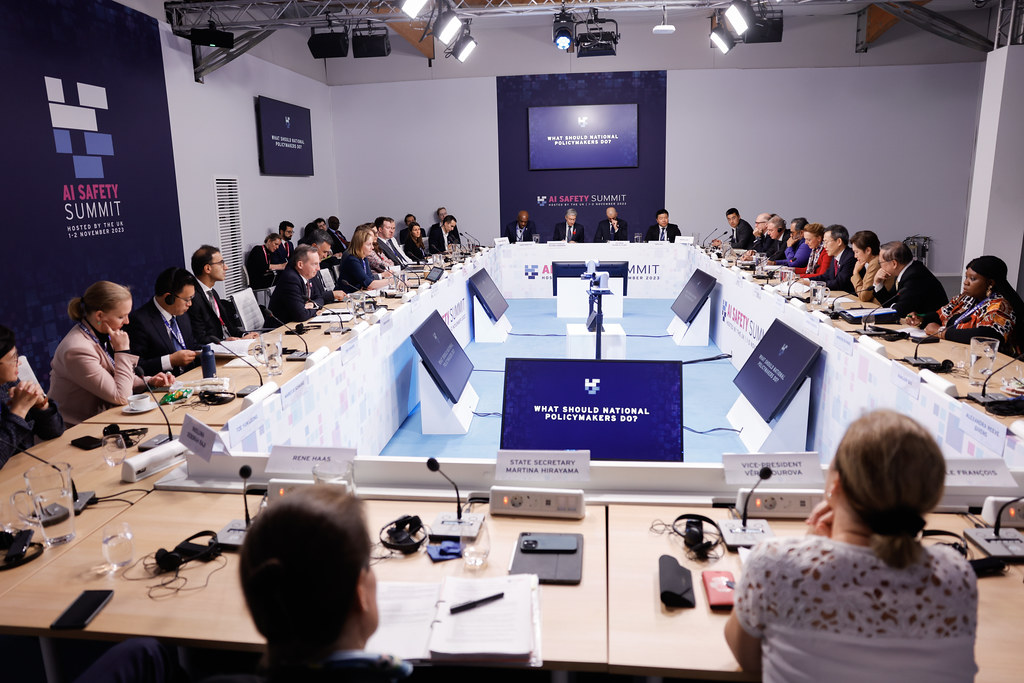Water Wars: Charm Offensives Yield Uncertain Results Throughout Southeast Asia
Sino-Japanese Summit Seeks to Restart Troubled Relationship

Published by The Lawfare Institute
in Cooperation With

Sino-Japanese Summit Seeks to Restart Troubled Relationship

Foreign Minister Fumio Kishida (left) meets with Chinese counterpart Wang Yi (right) (Photo: The Japan Times)
Japanese Foreign Minister Fumio Kishida arrived in Beijing last Friday for a three-day visit that included meetings with Chinese Foreign Minister Wang Yi, State Councilor Yang Jiechi, and Premier Li Keqiang. It was the first such visit in four and a half years. The Japanese Foreign Ministry announced that the two sides agreed to be “partners for cooperation” and not “a threat for each other.” Tokyo and Beijing also agreed to accelerate improvements in bilateral relations and increase people-to-people exchanges.
But the visit was by no means devoid of conflict. Regarding differences in the East and South China Seas, Minister Kishida reportedly told Minister Yi that as “the foreign minister . . . you should state the differences in our official positions and then propose what to do about them.” After the meeting, Minister Yi said that a “lack of mutual trust” remained between the two countries and that Tokyo must “face up to and reflect upon history and follow the one-China policy to the letter.” He also called on Japan to “have a more positive and healthy attitude toward the growth of China, and stop spreading or echoing all kinds of China threat or China economic recession theories.” Nikkei Asian Review reports that these demands “deeply irritat[ed] leaders in Tokyo.”
Nevertheless, Chinese Foreign Ministry Spokesperson Hua Chunying asserted that, “there are sign of improvement for Sino-Japanese relations.” The South China Morning Post also reported that Japanese Defense Minister Gen Nakatani is exploring the possibility of visiting Beijing this summer. The article also quoted a number of scholars in China and Japan that believe this week’s visit improved chances for a much-awaited meeting between President Xi and Prime Minister Abe.
In other news...
China
Last week’s charm offensive gained a harder edge this week as President Xi Jinping reiterated that “outsiders” have no role to play in the South China Sea and that, “China will firmly safeguard its sovereignty, rights and interests.” Ministry of National Defense Spokesperson Wu Qian chided the United States for continuing with “very dangerous” freedom of navigation exercises and reports indicate that Vice Foreign Minister Liu Zhenmin told ASEAN representatives that it would be a “risky move” for the organization to issue any statement on the China/Philippines arbitration.
Xinhua also announced that Chinese naval vessels began “an annual combat drill in the South China Sea and neighboring waters” on Wednesday. The military exercises will be separated into three groups operating in the South China Sea, east Indian Ocean, and west Pacific. The drills are reportedly aimed at “enhanc[ing] combat readiness” and will involve forces stationed on the Spratly and Paracel islands. Lastly, a music video featuring famed military folk singer Song Zuying, broadcast this week, provided us the closest look we’ve had of Chinese construction on Fiery Cross Reef.
United States
The USS Stennis, an aircraft carrier currently sailing through the South China Sea, will not be making a scheduled port call in Hong Kong. The Chinese Foreign Ministry said that U.S. naval port calls are approved “on a case-by-case basis” and that the Stennis’ visit was “not convenient” at this time. China Military Online, a paper associated with the Chinese military, cryptically noted that U.S. military ships visiting Hong Kong have “become a barometer of bilateral relations.” Interestingly, the USS Blue Ridge, floating headquarters of the Navy’s 7th fleet, is currently in Hong Kong for its own port call.
Late last week senior U.S. officials had strong words for China’s activities in the South China Sea. Secretary of Defense Ash Carter told the Senate Armed Services Committee that rumors about prospective Chinese construction on Scarborough Shoal was “particularly concerning to us, given its proximity to the Philippines.” Secretary Carter also confirmed that Chinese buildup in the region is “why we’re sending our best equipment to the Asia Pacific.” Deputy Secretary of State Anthony Blinken, speaking before the House Foreign Affairs Committee, noted that the U.S. has “deepened out commitment to the US-Australian-Japan trilateral strategic dialogue, hosted the US-Japan-Indian trilateral ministerial dialogue” and sought to strengthen “unity of the ASEAN community.”
Japan
After visiting Beijing, Foreign Minister Kishida kicked off an eight-day tour of Southeast Asia where he urged ASEAN to “strengthen its unity” and exert “its centrality in regional cooperation.” While in Thailand, Minister Kishida announced a $7 billion three-year infrastructure grant to countries in the lower Mekong river basin. Despite China’s heavy investment in the region, Japanese Foreign Ministry Deputy Press Secretary Masato Otaka told reporters that the visit and development grant were not aimed at China.
On Monday, Defense Minister Gen Nakatani told reporters that Japan will lease up to five TC-90 aircraft to Manila for training purposes. He added that, “improving the Philippines’ capability will lead to stability in the region.” This is the first lease of Self-Defense Force aircraft since Japan lifted a self-imposed can on weapons exports. Prashanth Parameswaran at The Diplomat notes that the TC-90 will roughly double the area that Philippine aircraft can patrol. Foreign Ministry Deputy Spokesperson Masato Otaka also confirmed that Hanoi raised the possibility of purchasing new Japanese naval vessels.
Taiwan
Taipei’s relationship with Tokyo deteriorated significantly after last week’s seizure of a Taiwanese fishing vessel operating 160 nautical miles off a Japanese-controlled atoll in the East China Sea. Taiwanese Foreign Minister David Lin summoned Japan’s representative Mikio Numata to protest the incident and Premier Chang San-cheng warned Japan not to “test our determination” on the issue. President Ma Ying-jeou was similarly incensed, arguing that Japan encroached “not only the rights of Taiwan’s fishermen but also those of fishermen from other countries” by asserting an EEZ around an atoll that cannot be considered an island. Negotiations with Tokyo are ongoing, but reports indicate that, if the dispute cannot be resolved, senior officials have considered appealing to an international arbitral tribunal for relief. Taiwan later sent two ships to patrol waters surrounding the atoll.
At the same time, the Coast Guard tamped down rumors that it had sent a new platoon of officers to reinforce troops on Taiping Island (Itu Aba). The Ministry of National Defense also squelched reports that it planned to deploy air-defense missile systems. President Ma did, however, lead a delegation of former premiers and national security officials on a tour of the island and the postal service announced a set of stamps that will feature Taiping Island. The stamps are part of Taiwan’s strategy to support their sovereign claims.
The Philippines
Rodrigo Duterte, mayor of Davao City and frontrunner in the Philippines’ presidential election, told supporters that he would hold bilateral talks with China to resolve territorial disputes if multilateral discussions do not succeed within two years. He also pledged to ride a jet ski to a disputed island occupied by China to personally stake the Philippines’ claims and plans to approach China about building rail lines from Manila to outlying provinces. PRC Foreign Ministry Spokesperson Hua Chunying, responding to a question on these statements, hoped “that the new Philippine government would properly deal with the South China Sea disputes with China and make concrete efforts to improve bilateral relations.”
Vietnam
Ambassador to the United States Pham Quang Vinh called on President Obama to completely repeal a lethal weapons embargo that was partially lifted in 2014 “to reflect our full normalization of relations . . . and the current level of our comprehensive partnership.” Senior Vietnamese leaders met with the new Laotian President and agreed to settle South China Sea disputes peacefully and in line with international law.
Indonesia
Indonesia, Malaysia, and the Philippines are finalizing plans for joint patrols in piracy-prone areas of the South China Sea after recent kidnappings south of the Philippines and north of Borneo. Over the past five weeks, fourteen Indonesian and four Malaysian seamen have been abducted.
Analysis, Commentary, and Additional Information
One of the most important pieces of commentary this week was a report from Ashley Townshend and Rory Medcalf at the Lowy Institute outlining what they term China’s “passive assertiveness” in the South China Sea. They find that China has been able to shift the burden of escalation to the United States and argue that a coordinated, multidimensional effort is needed to deter further Chinese action. Reuters explores one of the tools China has used to put the U.S. on its heels, training the country’s “fishing militia,” and Zheng Yongnian contemplates how China should move forward given its newly empowered position. Finally, Zack Cooper and Jake Douglas at War on the Rocks explore whether the U.S. has been able to successfully deter Chinese military buildup at Scarborough Shoal.
The world is still trying to make sense of Indonesian policy after Jakarta’s scuffle with Beijing almost a month ago. Benjamin Nathan at the East-West Center attributes the government’s seemingly contradictory maritime security policy to an institutionally weak executive and shifting domestic priorities. Evan Laksmana at The Washington Post instead uses international relations theory to explain Jakarta’s underbalancing as a product of unclear messaging from Beijing and uncertain domestic foreign policy objectives. At the opposite end of the spectrum, Leo Suryadinata argues that the Natuna incident has largely been resolved without harming Indonesia’s national interests.
Tokyo’s failed bid for Australia’s new submarine fleet led to considerable soul-searching about Canberra’s South China Sea strategy. Gareth Evans, foreign minister from 1988-1996, at The Australian asserts that the country’s defense white paper is a model for how the world should engage with Beijing. Tom Holcombe at The Interpreter finds that Japanese media are not hung up about the implications of Japan’s failed submarine bid on Sino-Australian relations. Tomohiko Satake at East Asia Forum agrees and projects a robust and sustained bilateral relationship.
Pivoting to Japan, Michael Auslin at AEI applauds Prime Minister Abe for repositioning Tokyo as a key player on the world stage up to and following the G7 summit. A post from The Japan News takes readers in greater detail through the weeds of what this “summit diplomacy” has involved.
India reared its head again after news that China’s naval fleet will conduct military exercises in the eastern Indian Ocean. Antony Clement at Modern Diplomacy projects closer Indo-Australian ties as both countries increase their influence in the region and Indrani Bagchi takes a more specific look at India’s seemingly contradictory positions regarding the South China Sea.
Lastly, no week would be complete without critical analysis of U.S. strategy. Nikolas Gvosdev at The National Interest argues that American naval assets are vastly overstretched and recommends prioritizing resources on essential national interests. Patrick Cronin and Marcel Angliviel de la Beaumelle at The Diplomat provide a South China Sea roadmap for the next president and James Borton explains why the environmental consequences of Chinese land reclamation should be a core concern.
Water Wars is our weekly roundup of the latest news, analysis, and opinions related to ongoing tensions in the South and East China Seas. Please feel free to email Chris Mirasola with breaking news or relevant documents.





